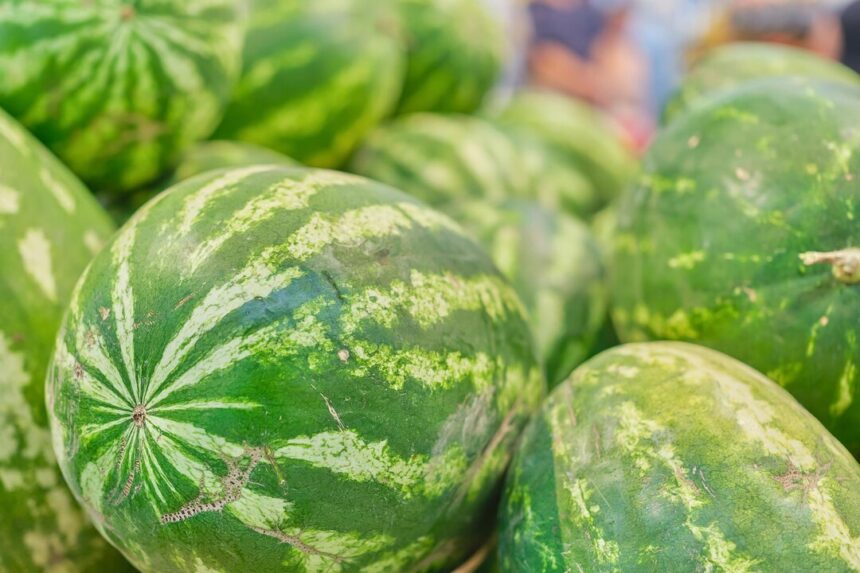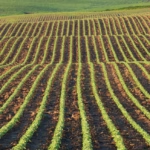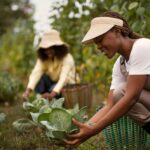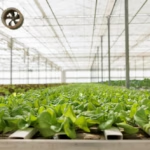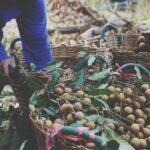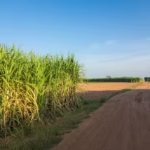Watermelons are a beloved summertime fruit cherished for their juicy sweetness and refreshing flavor. In South Africa, where the climate and soil conditions are conducive to watermelon cultivation, maximizing both quality and yield is essential for growers to meet consumer demand and achieve profitability. To ensure the success of watermelon crops, growers can implement various techniques and best practices aimed at enhancing fruit quality and increasing yields. Let’s explore some effective strategies for cultivating premium watermelons in South Africa:
1. Selecting the Right Variety:
Choosing the appropriate watermelon variety is the first step towards achieving success in cultivation. Consider factors such as fruit size, flavor, color, and disease resistance when selecting varieties. Popular watermelon cultivars in South Africa include Crimson Sweet, Charleston Gray, Sugar Baby, and Jubilee.
2. Soil Preparation and Fertilization:
Proper soil preparation is crucial for promoting healthy root development and maximizing nutrient uptake. Conduct soil tests to assess nutrient levels and pH, and amend the soil as needed with organic matter and fertilizers to create optimal growing conditions for watermelons. Apply balanced fertilizers rich in nitrogen, phosphorus, and potassium to support vigorous plant growth and fruit development.
3. Irrigation Management:
Watermelons have high water requirements, especially during fruit development. Implement efficient irrigation systems such as drip irrigation to deliver water directly to the root zone while minimizing water waste. Monitor soil moisture levels regularly and adjust irrigation schedules based on weather conditions and plant needs to prevent moisture stress and promote optimal growth.
4. Pest and Disease Control:
Watermelons are susceptible to various pests and diseases that can affect fruit quality and yield. Implement integrated pest management (IPM) practices to monitor for pests and diseases and take preventive measures to minimize damage. Use cultural practices, biological controls, and selective pesticides as needed to manage pest and disease populations effectively.
5. Pollination Management:
Proper pollination is essential for ensuring uniform fruit set and optimal fruit development in watermelons. Encourage natural pollinators such as bees and other insects by providing habitat and avoiding the use of harmful pesticides that may harm pollinators. Consider hand pollination techniques to supplement natural pollination and ensure adequate fruit set in large-scale operations.
6. Thinning and Pruning:
Thinning watermelon plants and pruning excessive foliage can help improve air circulation, sunlight penetration, and fruit quality. Remove excess fruit and vines to promote larger, healthier fruit and prevent overcrowding. Prune watermelon vines to control growth, reduce disease pressure, and facilitate harvesting and pest management.
7. Mulching:
Apply organic mulches such as straw, hay, or plastic film around watermelon plants to conserve soil moisture, suppress weeds, and regulate soil temperature. Mulching also helps prevent fruit rot, reduce soil compaction, and improve overall plant health and productivity.
8. Fruit Support and Protection:
Support heavy watermelon fruits with slings or netting to prevent them from touching the ground and reduce the risk of rot and pest damage. Place boards or straw under developing fruits to provide support and protection from soil-borne pathogens and pests.
9. Harvesting at Peak Ripeness:
Harvest watermelons at the peak of ripeness when the fruit develops a deep, uniform color, and the stem turns brown and dries out. Use sharp knives or shears to cut watermelons from the vine, leaving a short stem attached to the fruit. Handle harvested watermelons with care to avoid bruising and damage during transportation and storage.
10. Post-Harvest Handling and Storage:
Handle harvested watermelons gently to minimize bruising and damage, and store them in a cool, dry place to prolong shelf life and maintain fruit quality. Avoid stacking watermelons to prevent compression and bruising, and provide adequate ventilation to reduce moisture buildup and minimize decay.
By implementing these techniques and best practices, watermelon growers in South Africa can enhance fruit quality, increase yields, and achieve success in cultivation. Through careful planning, diligent management, and continuous innovation, the watermelon industry in South Africa can thrive and meet the growing demand for high-quality, flavorful watermelons in domestic and international markets.

